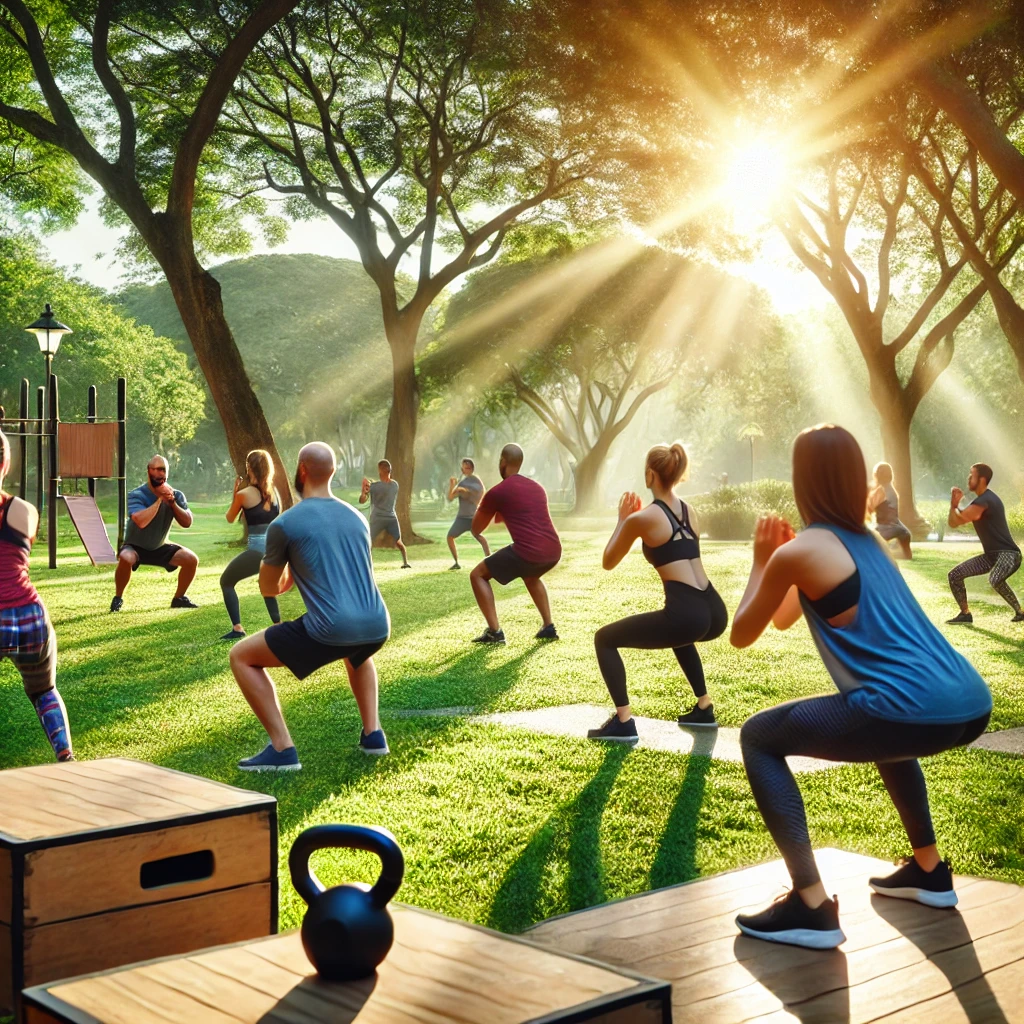Outdoor Workouts Made Easy: The Best Exercises for Parks and Trails
Outdoor workouts provide an excellent way to exercise in the fresh air without relying on a gym. They not only enhance physical fitness but also contribute to mental well-being. Parks and trails offer a variety of workout options that can be easily adjusted to any fitness level. Training outdoors can also be a refreshing change from gym routines, helping individuals to connect with nature while staying active.
Benefits of Outdoor Workouts
Enhanced Mental Health
Exercising outdoors can reduce stress and boost mood by stimulating endorphin production. Nature provides a calming environment that supports mental recovery. Additionally, exposure to natural sunlight helps regulate circadian rhythms and boosts vitamin D levels.
Versatile Training Options
Whether strength training, cardio, or flexibility exercises – parks and trails offer numerous possibilities for an effective full-body workout. Benches, stairs, and playground equipment can serve as workout tools, making training sessions more dynamic.
Free Workout Opportunity
Unlike gyms, parks and trails are freely accessible, making outdoor workouts a cost-effective alternative. This is particularly beneficial for those who prefer a flexible training environment without a financial commitment.
Best Exercises for Parks and Trails
Bodyweight Exercises
- Push-ups: Strengthen the chest, shoulders, and triceps. Variations such as wide or narrow push-ups engage different muscle groups. Elevated push-ups using park benches can further target the upper body.
- Squats: Train the legs and glutes. Jump squats add intensity and elevate heart rate. Bulgarian split squats using a bench improve balance and unilateral strength.
- Lunges: Effective for leg muscles and balance. Variations with jumps or twists make them more challenging. Walking lunges are ideal for using park paths efficiently.
- Bench Dips: Strengthen the arms and shoulders, particularly the triceps. Adding a weight like a backpack enhances the challenge.
- Step-ups: Using a sturdy park bench or a step, step-ups activate the quadriceps, glutes, and hamstrings.
- Planks: Strengthen the core, shoulders, and lower back. Variations like side planks or plank-to-push-ups add difficulty.
Cardio Exercises
- Jogging or Sprinting: Great for cardiovascular health and fat burning. Interval training can enhance endurance. Using park trails or tracks can make jogging more engaging.
- Stair Runs: Improve stamina and leg strength while increasing intensity. Parks with staircases offer an excellent spot for quick bursts of cardio.
- Jump Rope: An excellent cardio exercise that also enhances coordination. Great for high-intensity interval training (HIIT).
- Hill Sprints: Running up inclines builds explosive power and cardiovascular endurance.
- Agility Drills: Using lines, trees, or playground structures, agility drills like lateral shuffles or cone drills enhance speed and coordination.
Flexibility and Mobility Exercises
- Yoga Poses: Improve flexibility and promote muscle relaxation, aiding post-workout recovery. Sun salutations, downward dog, and warrior poses help open up tight muscles.
- Dynamic Stretching: Enhances blood circulation and prevents injuries by preparing muscles for exercise. Leg swings, arm circles, and torso twists are great warm-ups.
- Static Stretching: Performed post-workout to improve muscle recovery. Focus on hamstrings, quadriceps, and shoulders.
- Foam Rolling: If available, using a portable foam roller can help relieve muscle tightness after exercise.
- Balance Exercises: Standing on one leg or practicing tree pose improves stability and coordination.
Flexibility and Mobility Exercises
- Yoga Poses: Improve flexibility and promote muscle relaxation, aiding post-workout recovery. Sun salutations, downward dog, and warrior poses help open up tight muscles.
- Dynamic Stretching: Enhances blood circulation and prevents injuries by preparing muscles for exercise. Leg swings, arm circles, and torso twists are great warm-ups.
- Static Stretching: Performed post-workout to improve muscle recovery. Focus on hamstrings, quadriceps, and shoulders.
- Foam Rolling: If available, using a portable foam roller can help relieve muscle tightness after exercise.
- Balance Exercises: Standing on one leg or practicing tree pose improves stability and coordination.
Tips for a Successful Outdoor Workout
- Choose the Right Footwear: Proper shoes prevent injuries and provide stability on uneven terrain.
- Check the Weather: Adjust workouts for extreme conditions; use sun protection or weather-appropriate clothing.
- Stay Hydrated: Carry water to prevent dehydration, especially for extended or intense sessions.
- Prioritize Safety: Be mindful of surroundings, especially in isolated areas, and consider working out with a partner.
- Stick to a Routine: A consistent workout schedule enhances progress and motivation.
Outdoor workouts offer a flexible and effective way to stay fit. Parks and trails are ideal locations for varied training sessions that can be easily adapted. Regular exercise in nature maximizes both physical and mental health benefits, making it a rewarding and sustainable fitness approach for all levels.


